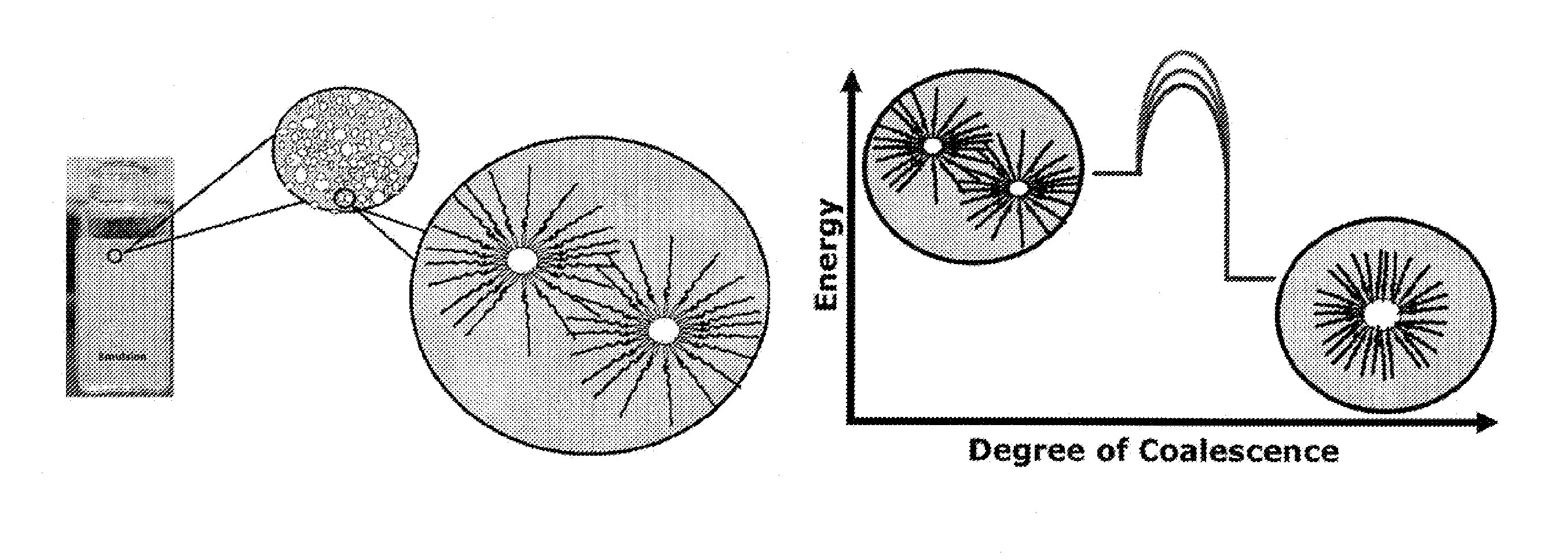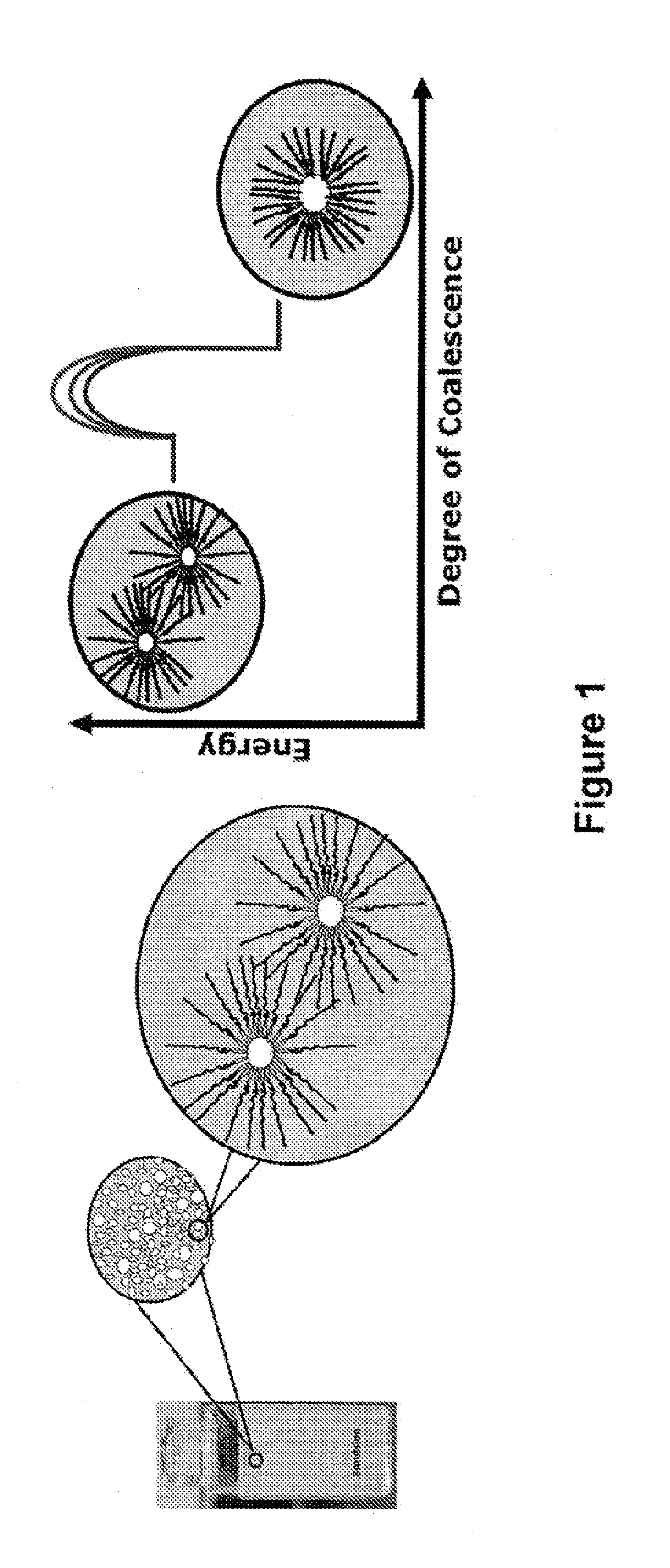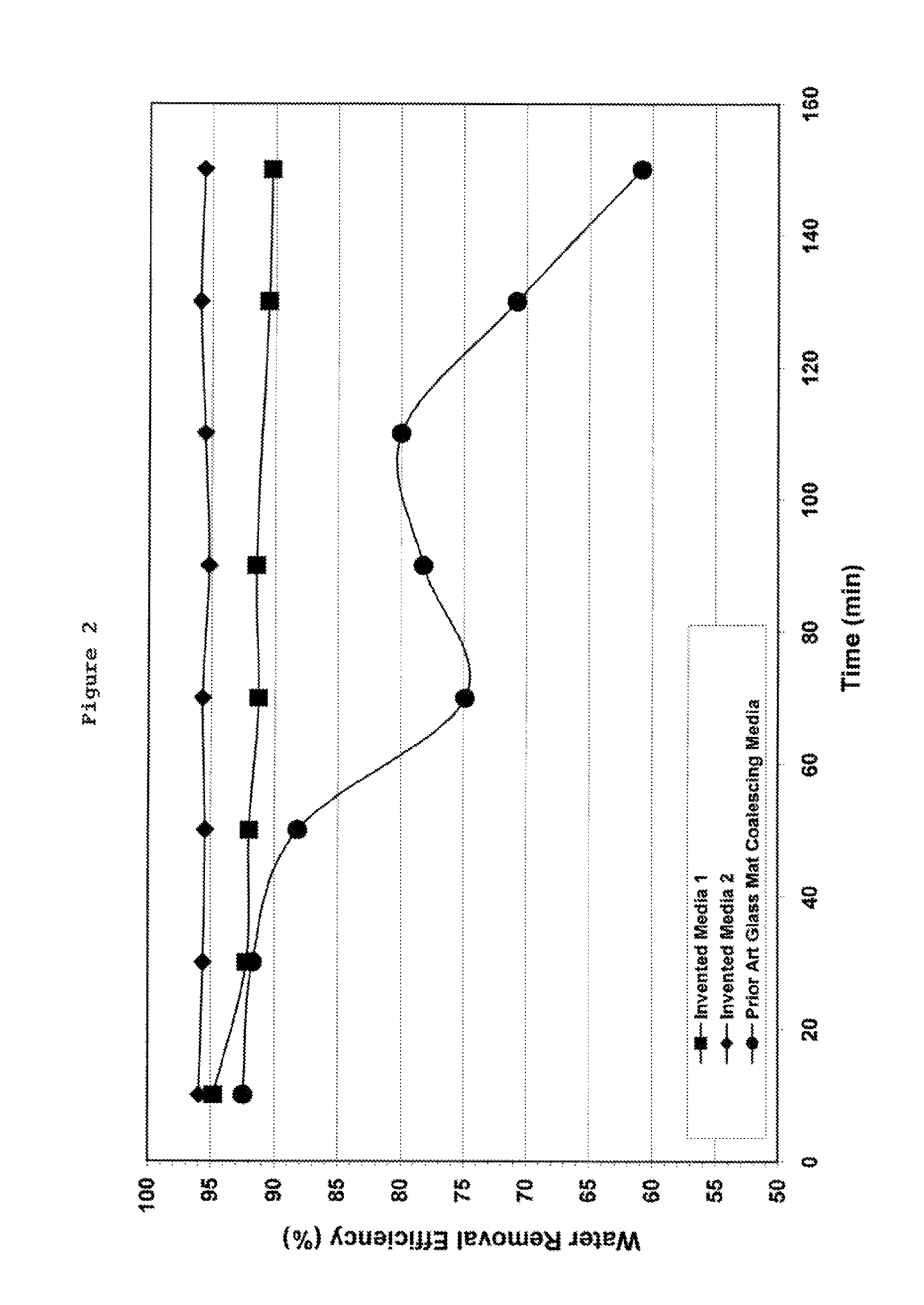Coalescence media for separation of water-hydrocarbon emulsions
a technology of water-hydrocarbon emulsion and coalescence media, which is applied in the field of sheetlike media, can solve the problems of reducing pore structure and reducing performance, and achieve the effects of enhancing surface area, low energy of aqueous adsorption, and high surface area
- Summary
- Abstract
- Description
- Claims
- Application Information
AI Technical Summary
Benefits of technology
Problems solved by technology
Method used
Image
Examples
example 1
Single Layer
[0163]70.8% virgin Softwood Kraft fiber
[0164]28.5% fibrillated Lyocell
[0165]0.5% polyamide-epichlorohydrin (PAE) resin wet strength additive
[0166]0.2% polyacrylamide dry strength additive
example 2
Single Layer
[0167]30.0% B-Glass 0.65 micron diameter
[0168]49.0% virgin Softwook Kraft fiber
[0169]20.3% fibrillated Lyocell
[0170]0.5% polyamide-epichlorohydrin (PAE) resin wet strength additive
[0171]0.2% polyacrylamide dry strength additive
example 3
Single Layer
[0172]67.00% Disruptor™ fiber
[0173]23.00% virgin Softwook Kraft fiber
[0174]9.70% fibrillated Lyocell
[0175]0.15% polyamide-epichlorohydrin (PAE) resin wet strength additive
[0176]0.15% polyacrylamide dry strength additive
PUM
| Property | Measurement | Unit |
|---|---|---|
| droplet size | aaaaa | aaaaa |
| diameter | aaaaa | aaaaa |
| pore size | aaaaa | aaaaa |
Abstract
Description
Claims
Application Information
 Login to View More
Login to View More - R&D
- Intellectual Property
- Life Sciences
- Materials
- Tech Scout
- Unparalleled Data Quality
- Higher Quality Content
- 60% Fewer Hallucinations
Browse by: Latest US Patents, China's latest patents, Technical Efficacy Thesaurus, Application Domain, Technology Topic, Popular Technical Reports.
© 2025 PatSnap. All rights reserved.Legal|Privacy policy|Modern Slavery Act Transparency Statement|Sitemap|About US| Contact US: help@patsnap.com



